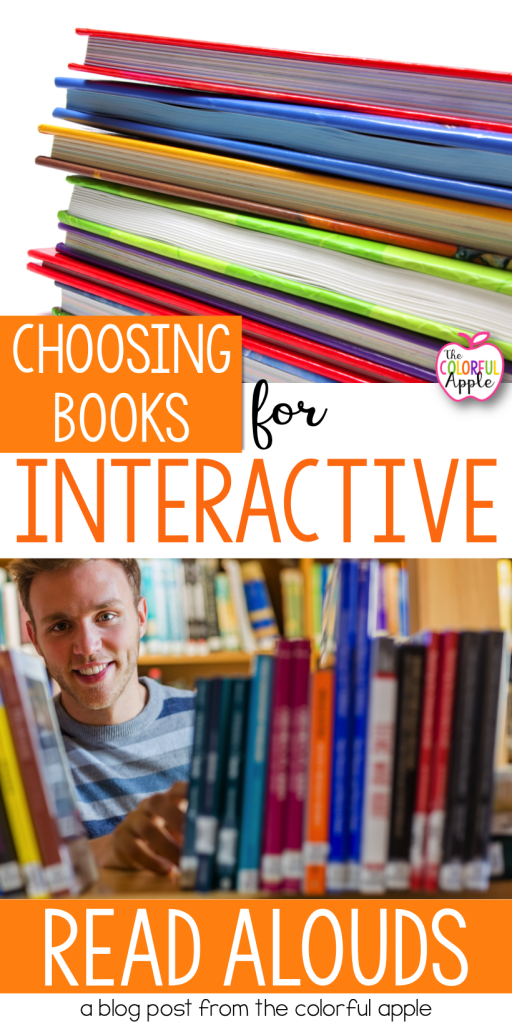
Text selection is the most important element of a strong reading experience. So, how do we choose the best interactive read aloud books? While it’s easy to simply grab a book off the shelf, we are working on being intentional with our read-alouds in order to save time.
This means that we shouldn’t be wasting a minute of instruction with books that are only slightly appealing, have no substantial ideas or have boring illustrations. If you are intentionally choosing books for the strategies that you want to teach, you will be saving yourself time!
I’m sharing all these tips on my YouTube channel as well! Learn more about Choosing a Book for Interactive Read Alouds here:
What makes a good interactive read aloud book?
- High quality – Books that are award winners, have excellent authors, or powerful illustrations are all examples of high quality reads.
- Engaging – Interactive read aloud books should be one that your students will love. It could funny or exciting. You need to love it too, in order to truly engage your students.
- Rigorous – Take into account the genre, as well as opportunities for addressing vocabulary, skills and strategies. It should be at students’ listening level, which is higher than their independent reading level
- Relatable – These books should allow students to make connections to their own experiences.
Guidelines for interactive read aloud books

Listening Level
Consider student reading levels and speaking vocabulary levels when choosing a book. Student listening level is often higher than their independent reading level. It will be a book that they probably can’t read on their own. A read-aloud book should be a few levels above their independent reading level.
The ideas in the text should give students much to talk about. It should leave them talking and thinking after the read aloud is over.
However the book shouldn’t be too high, we don’t want it to be too confusing and over their heads. Think about vocabulary levels. If you have to explain multiple words, it is too hard.
Mirrors and Windows
Books should be windows and mirrors for your students. A mirror has characters that reflect your students’ identities, experiences and motivations. A window offers insight into experiences of kids their age, but who live very different lives.

They need texts that offer new perspective on familiar topics or ideas. A variety of cultures help students see things from different perspectives. Think about the text relative to other books you have read aloud.
Keep the age of the characters, socioeconomic status, race, and gender in mind when picking a book. A variety should be represented by the characters in your books.
Student Interests
The interests of your students are a key aspect to choosing books. The books should be engaging and give them something to talk about. Texts that introduce students to fascinating topics or information. Books about topics that students have said they want to know more about. Texts by familiar or beloved authors. Books that they will be able to connect with.
Want to have interactive read-alouds done for you every month? Come join us in the Colorful Apple Book Club!

Save these tips for later! Just pin the image below:
